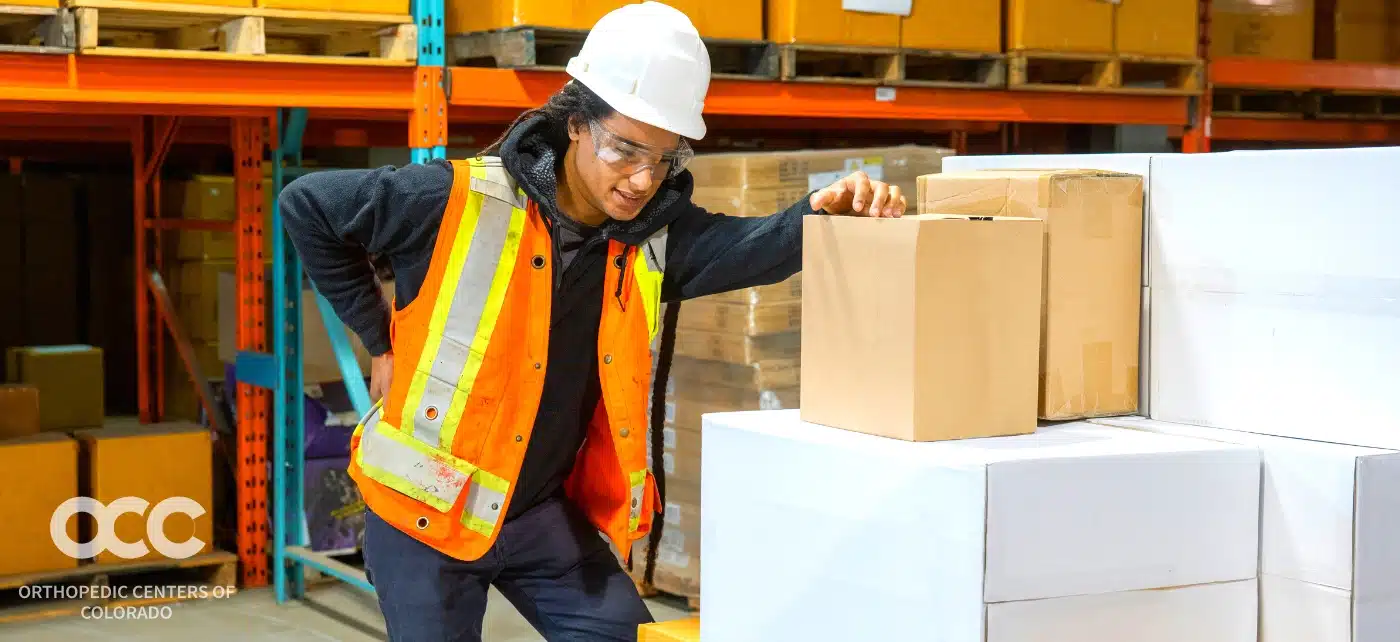If you’ve been hurt at work and are looking for treatment through your worker’s compensation claim, there’s a lot to consider. You likely want to reduce and, ideally, eliminate pain as soon as possible so you can get back to work and life. But where should you start? Find out if your worker’s compensation plan gives you access to interventional pain procedures. Dr. Robert Kawasaki, a workers compensation doctor in Lakewood, Colorado, explains what they are and how they can help.
“Interventional pain procedures involve the use of minimally invasive techniques to treat pain,” says Dr. Kawasaki. “These procedures can have a big impact when other conservative treatments, such as medication or physical therapy, have not provided sufficient relief.”
Interventional pain procedures can be used to treat a wide range of painful conditions, including pain from injuries to the back, neck, and other joints, and even can be used to treat recurring headaches. These procedures are performed by trained pain management specialists, may be included in your worker’s comp care, and can often be performed on an outpatient basis with minimal recovery time. They can provide long-lasting pain relief and improve the quality of life for many patients.
Here are three types of interventional pain treatments that help many worker’s comp patients:
1. Interventional spinal injections for pain
Spinal injections can be used to treat pain by delivering relief directly into the spinal canal or nearby nerves, reducing inflammation, or blocking pain signals from reaching the brain. By providing pain relief, these procedures can also give patients the opportunity to pursue other forms of rehabilitation or therapy that can reduce or eliminate pain long-term.
There are several different types of spinal injections that can be used to treat pain, including:
- Epidural injections: These injections deliver medication, such as corticosteroids, into the epidural space around the spinal cord. They can be used to treat pain in the neck, back, arms, and legs caused by conditions such as herniated discs or spinal stenosis.
- Facet joint injections: These injections deliver medication directly into the facet joints – which connect the bones and the spine – and can help relieve pain caused by conditions such as arthritis.
- Nerve block injections: These injections deliver medication directly to a specific nerve or group of nerves that are causing pain. They can be used to manage conditions such as sciatica or chronic regional pain syndrome
2. Physical medicine and rehabilitation (PM&R)
Physical medicine and rehabilitation are often used in workers’ compensation cases to help injured workers recover from their injuries and return to work as soon as possible. PM&R specialists are medical doctors who specialize in the diagnosis, treatment, and management of musculoskeletal and neurological conditions.
In workers’ compensation cases, PM&R is typically used when an injured worker has sustained an injury that affects their ability to perform their job duties. PM&R specialists work with the injured worker to develop a treatment plan that includes physical therapy, occupational therapy, and other rehabilitative services to help the worker regain strength, mobility, and function.
PM&R is used in workers’ compensation cases to:
- Reduce pain and improve function: PM&R specialists use a variety of techniques, such as physical therapy, massage, and acupuncture, to help reduce pain and improve function in injured workers.
- Help injured workers return to work: PM&R specialists work closely with injured workers to develop a treatment plan that is tailored to their specific needs and goals, with the aim of helping them return to work as soon as possible.
- Provide ongoing support: PM&R specialists provide ongoing support to injured workers throughout the workers’ compensation process, helping them navigate the system and access the care and resources they need to recover from their injuries.
3. Physical therapy
Physical therapy is frequently used by workers’ compensation doctors as part of the treatment plan for injured workers. Physical therapy is a non-invasive, non-surgical approach that can help injured workers recover from their injuries, regain strength and mobility, and return to their pre-injury function.
When an injured worker sees a workers’ compensation doctor, the doctor will perform a comprehensive evaluation to determine the extent of the worker’s injuries and develop a treatment plan that often includes physical therapy. Physical therapy has many benefits, including the creation of a supportive, active recovery environment for the person receiving care. A qualified physical therapist can help the patient to set important goals and timelines for recovery and significantly contribute to a positive mindset throughout the process. A physical therapy plan may include:
- Exercise and stretching: Physical therapists will work with injured workers to develop an exercise and stretching plan that is tailored to their specific needs and injuries. These exercises may include range-of-motion exercises, strengthening exercises, and stretches.
- Manual therapy: Physical therapists may use hands-on techniques, such as massage or joint mobilization, to help improve mobility, reduce pain, and promote healing.
- Modalities: Physical therapists may use modalities such as heat, ice, ultrasound, or electrical stimulation to help relieve pain and promote healing.
- Education and home exercises: Physical therapists will teach injured workers how to perform exercises and stretches at home to continue their rehabilitation between physical therapy sessions, which can speed recovery and improve overall outcomes.
Physical therapists work closely with workers’ compensation doctors to ensure that the treatment plan meets the needs of the injured worker and that progress is being made toward recovery.
Lakewood workers compensation doctor Robert Kawasaki is board-certified in Physical Medicine and Rehabilitation and fellowship trained in interventional pain procedures. Has been in practicing medicine in Colorado since 1995, specializing in spinal, musculoskeletal, and neurological injuries. He is skilled in performing interventional spinal injection procedures, electrodiagnostic testing, and a variety of joint, soft tissue, spinal, and pain-relieving injections. He has expertise in treating Worker’s Compensation (Level II accredited), auto, personal, and sports injury cases. Learn more or make an appointment today.








